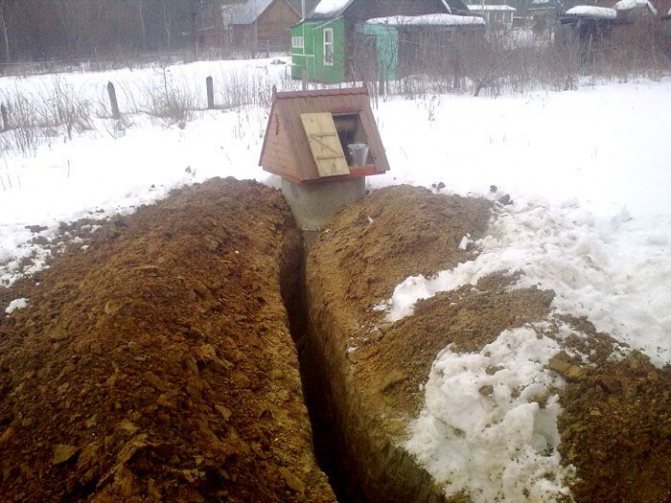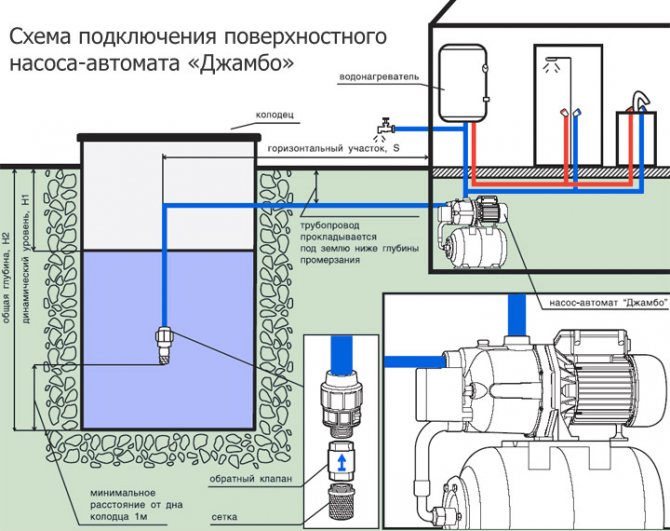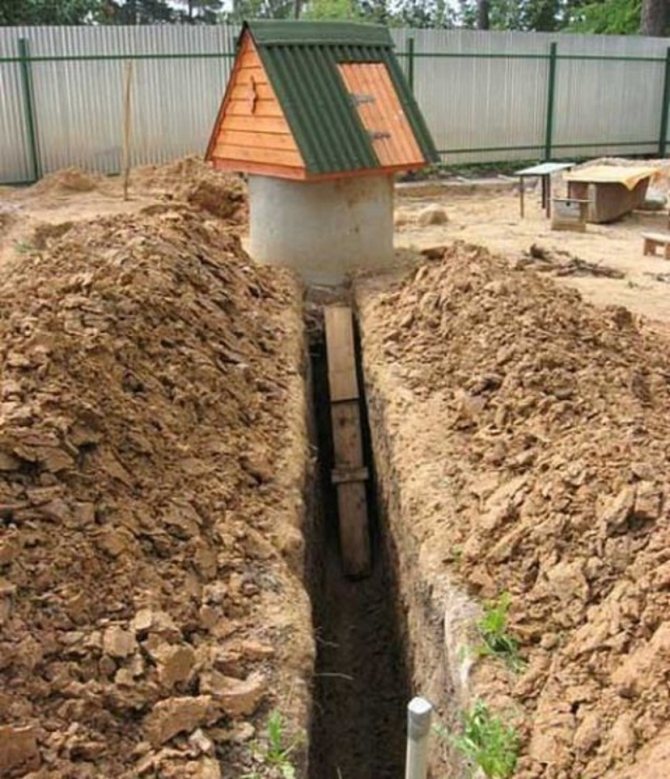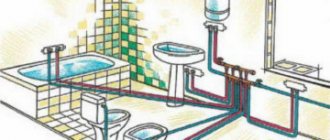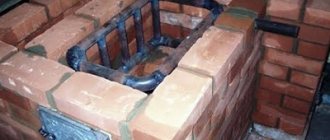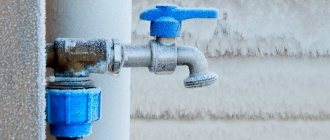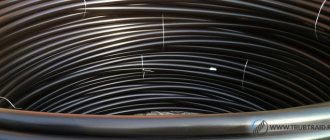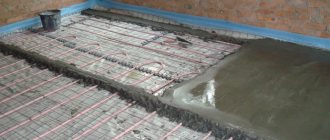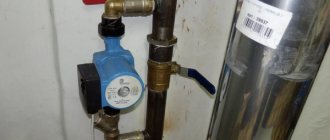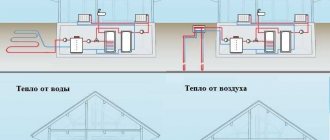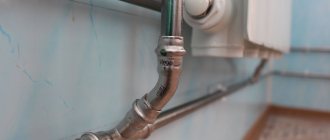Water supply maintenance rules
During operation, it is necessary to periodically check the integrity of the electrical cable and grounding, control the operation of the automation, and regularly clean the filters.
Preparing a summer water supply system for conservation for the winter:
- Drain the pipes.
- Dismantle outdoor equipment and put it indoors.
- Drain water from all plumbing fixtures, washing machine and dishwasher.
To completely remove water, the system is purged with compressed air using a compressor.
Advantages and disadvantages of well water supply
When compared with other types of sources for organizing the water supply of the dacha, the well has obvious positive aspects:
- Availability of implementation. Do-it-yourself water supply of a private house from a well is a task that is quite accessible to any owner.
- Simple installation. Even with minimal work skills, the task can be completed without the help of qualified specialists.
- Small costs for plumbing in a private house from a well. For example, in the presence of a deep well, the cost of equipment for water supply to a country house will be higher than that of a well option.
- Convenience in work. If the electricity is cut off, the water from the well can be lifted mechanically.
It is equally important to pay attention to the negative aspects:
- Water from the upper horizon is not always of high quality, therefore, when organizing water supply from a well, a filtration system must be installed.
- With intensive use of water in the house, the filters will have to be changed once a month.
- The well should be cleaned once a year to maintain a stable supply of water.
- The level of the water table changes in different seasons. This can affect the operation of the water supply system of a private house when supplied from a well.
Carrying out water to a private house from a well with your own hands
First, you need to connect a pump to the well, which will pump water from this well to the pipes... When the pump is already installed, for the installation of the water supply, you should prepare:
- Pipes... They can be steel, galvanized steel, copper and metal-plastic. All metal pipes will have to be connected to each other by welding - this is laborious, financially costly, and a specialist should do this. There are several ways to connect pvc pipes.
- Insulation (insulation)... This material is necessary so that in winter, during low air temperatures, the water does not freeze in the pipes.
- Wires are needed to connect the pump to the mains.
It is better to give preference to metal-plastic pipes, which are a popular modern material for installing a plumbing system. All connections are made with threads, only fittings, nut wrenches and FUM tape are needed.
Sequence of work:
- The wiring starts with the pump. You need to take the pipe and attach it to the outlet pipe. This pipe will supply water to the top. After connection with a branch pipe, a check valve is mounted. Its function is to obstruct the water flow from the system in the opposite direction.
- Another pipe will be cut into the central pipe, in the place above the valve, through which water should be supplied to the collection station. It is necessary to make a slight slope of this line towards the well.
- A tap must be installed in front of the collector, thanks to which it will be possible to turn off the water supply if necessary.A place is being prepared for it, to which free access will be provided in the event of an emergency.
- Water pipes are laid at a certain depth... These parameters depend on the level of groundwater, the depth of freezing of the earth. Thanks to a special heat engineering calculation, unnecessary costs can be avoided due to the large depth of the line, because the water in the pipes should not freeze in winter and overheat in summer.
- When the pipes are laid, you can start to insulate them.... To do this, in the modern market there are many different materials, ranging from simple fabric insulation, and ending with various heating cables that are connected to the mains.
- The line is entered into the room through the floor, but if this is not possible, then it must be done through the walls. In the place where the pipes come into contact with the surface of the house, it is necessary to lay plastic cups and special fasteners.
- In the house, pipes are laid to all necessary consumers: good faucets for bath and kitchen, a water boiler for heating water, and so on.
To carry out such a calculation, it is better to contact a specialist, or you can simply ask him about the dimensions of the buried pipes in a given region. In general, pipes of medium diameter (300 mm) should be laid 20 cm below the freezing depth.
If in a given region the ground freezes by 40 centimeters, then pipes must be laid to a depth of 60 centimeters from the surface of the earth.
How to lay a water supply system from a well to a house for ease of use
It is somewhat easier to carry out installation work when using a submersible pump, but repairing equipment is more convenient if a pumping station is installed. Regardless of the water supply scheme, a certain place in the house or in a separate room will be required to accommodate an electrical panel, a hydraulic accumulator and a water supply unit.
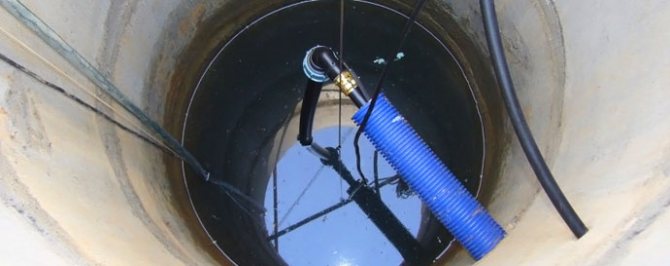
Submersible pump
The installation of an autonomous water supply system begins with submerging the pump into a well using a steel cable with a polymer braid. The device should be at least one meter from the bottom of the well. It is strictly not allowed to mount the pump on a cable that supplies electricity. The supply wire is either in the ground or in the air.
It is recommended to install a filter on the suction port, and the outlet is connected to the pipe. The water pipe feeds the tank or accumulator. An oblique filter and a non-return valve are desirable at the inlet in front of this container. At the exit from it, a filter is mounted, after which the wiring of the internal water supply and shut-off valves is carried out.
It is required to dig a trench from the well to the pumping station, the depth of which will not allow the water to freeze. A pipe and, if necessary, an electric cable are laid in the trench. When choosing a pipe material, it should be understood that it will work in an aggressive environment, so metal will not be the best option.
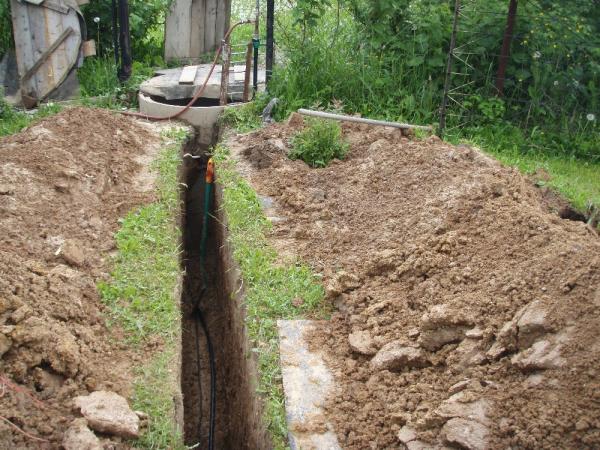

Digging a trench
The use of metal-plastic pipes is the best choice, as they are high-tech and practical. Through the previously prepared hole in the ring, the pipe is brought into the well and lowered almost to the bottom. A filter is inserted at the end to prevent clogging.
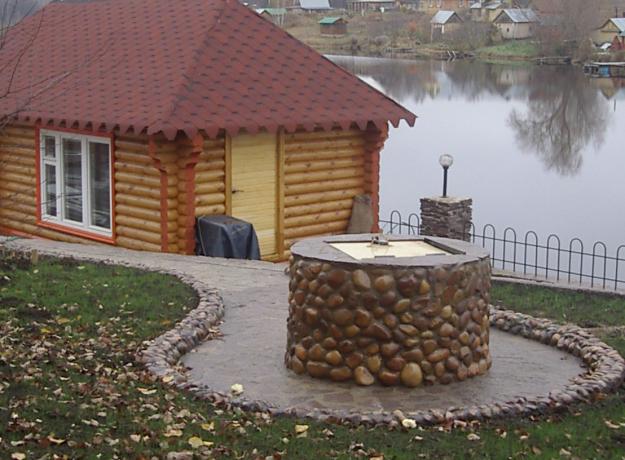

The trench is being closed
After that, the trench is buried, and a clay castle is made around the well.
Installation work in the house
The water coming from the well is needed filter and purify... The implementation of such a water treatment system is due to the conclusions of the laboratory analysis of water.
The implementation of the simplest water supply scheme is carried out by installing a storage tank at the top of the entire system. From there, water can flow by gravity to any point in the house. However, this scheme is not perfect.It can only be used in a country house, the owner of which comes for a short time. The water pressure in such a scheme is uneven, and the water level must be constantly monitored. Installing a water heater will entail problems.
If you install a membrane accumulator (receiver) of 50 or 100 liters, then the water supply system will always have an even water pressure. After the pump has filled it to a critical pressure, a sensor will work, which will turn off the electricity. If the pressure drops, the pump will start again.
Receivers are usually sold as a set with pumping stations and are part of their design.
For submersible pumps, the receiver is purchased separately.
Choosing a method of supplying water to the house
To raise water from a well and supply it to a pipeline, you can use:
- submersible pump;
- surface ejector pump;
- pumping station.
Which pump to prefer
Submersible pump characteristics:
- water rise height - up to 80 m;
- immersion depth - up to 50 m;
- productivity - up to 110 l / min;
- power - up to 1000 W.
The disadvantage of deep pumps is the complexity of repair and maintenance.
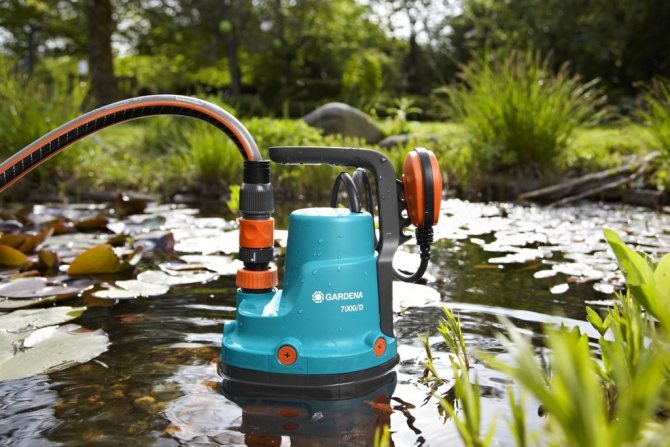

Surface pump.
Surface pump characteristics:
- lifting height - up to 60 m;
- suction depth - up to 9 m with a built-in ejector, up to 30 m with a remote one;
- productivity - up to 400 l / min;
- power - up to 2350 W.
Disadvantages of a surface pump are noise in the house. When choosing a pump in terms of power, it should be borne in mind that energy consumption rather than performance depends on this parameter.
Benefits of pumping stations
Pumping station - a unit that combines a pump, a hydraulic accumulator, a pressure gauge, a pressure switch (sometimes a dry-running switch). Only filters and counters will have to be added to the system.
Advantages:
- everything you need in one device;
- the volume of the expansion tank is matched to the power of the pump;
- quick and easy installation.

